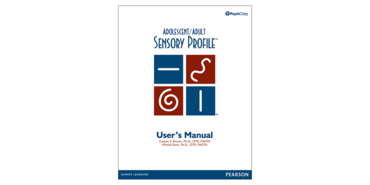Adolescent/Adult Sensory Profile® helps measure sensory processing patterns and effects on functional performance. An individual answers questions regarding how he or she generally responds to sensations, as opposed to how he or she responds at any given time
Adolescent/Adult Sensory Profile
Sensory Profile Adult/Adolescent
Adolescent/Adult Sensory Profile® helps measure sensory processing patterns and effects on functional performance. An individual answers questions regarding how he or she generally responds to sensations, as opposed to how he or she responds at any given time‹ View all tests and materials
Adolescent/Adult Sensory Profile Complete Kit (Print)
9780761649700
Qualification Level
B
Includes User's Manual and 25 Self-Questionnaire/Summary Score Sheets.
£193.20